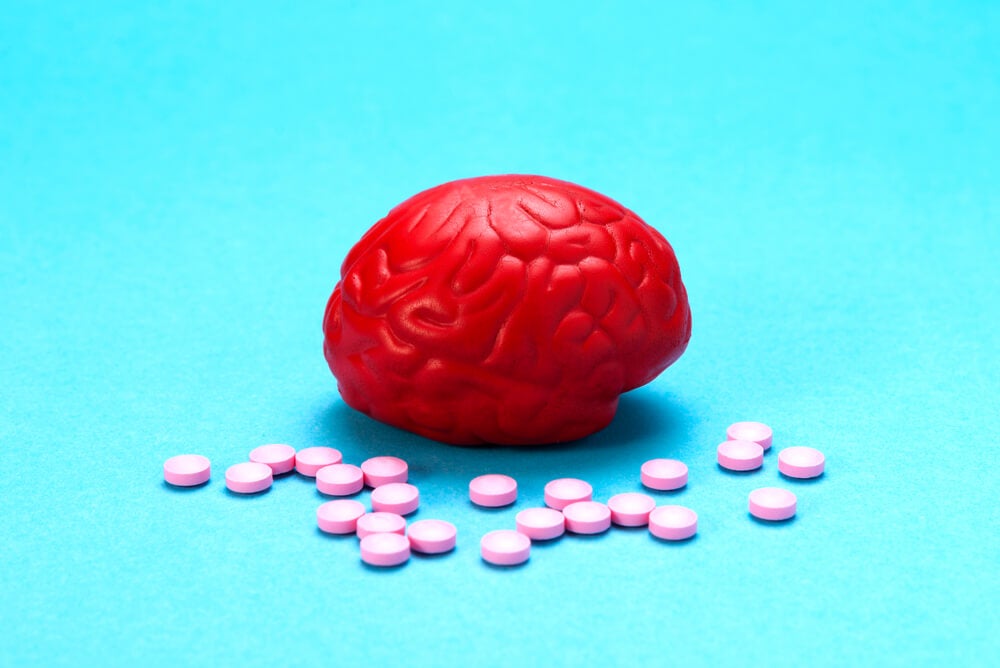Antipsychotics are psychotropic drugs available by prescription only and are allowed to treat mental health problems whose symptoms include psychotic symptoms, such as those that appear in schizophrenia, schizoafective disorder, certain forms of bipolar disorder, or severe depression.
Some antipsychotics can also be used to treat severe anxiety (but only at very low doses), as well as physical problems, difficulty balancing, nausea and restlessness. However, antipsychotics are not recommended for psychotic symptoms of dementia.
- Antipsychotic drugs can also be called neuroleptics.
- Some people prefer this term because of its meaning.
- “dominate the nerves”.
- A description that more accurately reflects its action.
Several possible explanations underlie the potential efficacy of antipsychotic drugs:
The main neurotransmitter involved in schizophrenia is dopamine, at least that is what defends the dopamine hypothesis of schizophrenia, one of the most widespread, which performs its functions in the brain through different pathways:
Other dopamine pathways
Antipsychotics fall into two classic categories: first generation (older) antipsychotics and second generation (newer) antipsychotics. Both types can be potentially effective, but differ in the type of side effects they can cause.
The main difference between these two categories is that first-generation antipsychotics block dopamine, while second-generation antipsychotics act on Serotonin levels.
Some research suggests that some second-generation drugs have less pronounced effects in terms of body movement than those caused by first-generation drugs.
First developed in the 1950s. Sometimes called “typical”, they are divided into several different chemical groups. They act very similarly to each other and most are for oral use, although there are long-release injections.
They can cause side effects that are ultimately extrapyramidal symptoms.
Some of these typical antipsychotics are: chlorpromazine (commercially known as Largactil), Flupentixol (Fluanxol), Flufenazine (Modecate), Haloperidol (Haldol), Loxapine (Loxapac), Perfenazine (Trilafon), Pimozida (Orapina) (Navanxol).
In general, the option is to use second-generation or “atypical” antipsychotics, first developed in the 1990s, as they generally cause less serious neuromuscular side effects than first-generation antipsychotics.
In addition, some also cause fewer sexual side effects than older antipsychotics; however, the second generation is more likely to cause metabolic side effects, including rapid weight gain.
Clozapine is the only FDA-approved drug to treat schizophrenia, which is resistant to other treatments and is also indicated to decrease thoughts related to suicidal behavior in people with schizophrenia.
Medications in this category include risperidone (Risperdal), quetiapine (Seroquel), olanzapine (Zyprexa), ziprasidone (Zeldox), paliperidone (Invega), aripiprazole (Abilify) and clozapine (Clozaril). Clozapine is slightly different from other medicines.
These second generation antipsychotics are sometimes used to treat anxiety and mood disorders, such as bipolar disorder, post-traumatic stress disorder and obsessive-compulsive disorder, although they have not been officially approved for such use.
With the exception of clozapine, both groups of drugs are also effective. Choosing the type of antipsychotic is usually based on side effects.
One advantage of atypical neuroleptics is that they do not contribute to dopaminergic blockage of the mesolimbic pathway, implying a clinical benefit; In addition, they increase dopamine secretion in the nigroestriatal and mesocortical pathways, causing extrapyramidal effects and negative symptoms. decrease due to dopamine blockage.
Since most tests were performed compared to haloperidol and relatively high doses, there are doubts about this potential benefit, and it causes other side effects with a similar frequency.
Atypical antipsychotics have been considered to be more effective than conventional antipsychotics in the treatment of affective or negative symptoms (impoverishment of a person’s thinking and behavior).
Chlozapine is associated with a high incidence of anticholinergic effects, similar to those of chlorpromazine, in addition to agranulocytosis. With other atypical antipsychotics, the incidence of these problems is no higher than that of haloperidol.
Anticholinergic, sedative, hypotensive and weight gain effects are common with all atypical antipsychotics. This also occurs with the risk of hyperglycemia that appears to be higher, especially with clozapine and olanzapine.
The frequency of certain side effects may differ between each of the atypical antipsychotics, however, the lack of direct comparison studies between them does not allow specific conclusions to be drawn.

